• GPX file
• Profile
• Logbook
• Where are we?
Photo album:
• Nelson & Marlborough
Recommended services:
• Golden Bay kayaks
• Golden Bay air
Did you find our website useful?
THANK YOU!
Leg breakdown:
Date Activity Leg Distance (Km) Elev. Gain (m) Elev. Desc. (m) 9-Apr-19 Riding, Hiking Pohara to Farewell Spit 88.6 291 293 10-Apr-19 Riding Collingwood to Pohara 36.9 214 206 13-Apr-19 Kayaking, Hiking Tata beach to Waiharakeke bay 31.2 14-Apr-19 Kayaking, Hiking Waiharakeke bay to Mosquito bay 20.6 15-Apr-19 Kayaking, Riding Mosquito bay to Marahau to Motueka 40.8 16-Apr-19 Riding Motueka to St. Arnaud 106.0 972 339 17-Apr-19 Hiking St. Arnaud to Angelus hut 12.5 882 110 18-Apr-19 Hiking Angelus hut to St. Arnaud 12.2 108 652 19-Apr-19 Riding St. Arnaud to Blenheim 104.0 154 791 22-Apr-19 Riding Blenheim to Picton 34.6 119 131 Total 487.4 2889 2673
9-22 April, 2019: Nelson & Marlborough
In this part of the trip we visit the regions of Nelson and Marlborough, at the top of the South Island. The end of the Heaphy track brings us to the Golden Bay, the most northwest bay of the South Island. It is bounded on the North by the Farewell Spit, a 27 km dune barrier created by the deposition of sand due to marine currents and the playful effect of constant winds, and to the south by the Abel Tasman National Park.
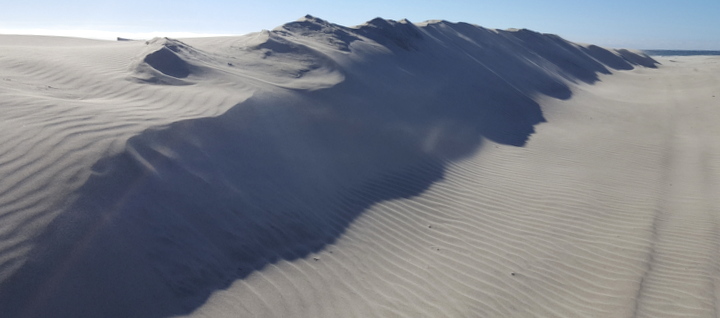
Our first visit is to the Farewell Spit. Most of the sand spit is a protected area for migratory birds and access to the public is prohibited. We take a walk through the accessible area, starting with the inner part of the bay. Here the beach is so flat and the tide advances and recedes hundreds of meters. We are at high tide and all the seabirds are near the coast pecking the wet sand searching for food. We cross the sand barrier between dunes and as we get closer to the coast of the Tasman Sea, the wind increases in intensity. The sand on the beach is constantly blown away, which not only makes the dunes advance, but also increases the length of the barrier little by little. The trees grow slanted and the birds fly close to the ground with difficulty. When returning to the coast of the interior of the bay, the water is more than half a kilometer away from the high tide line.
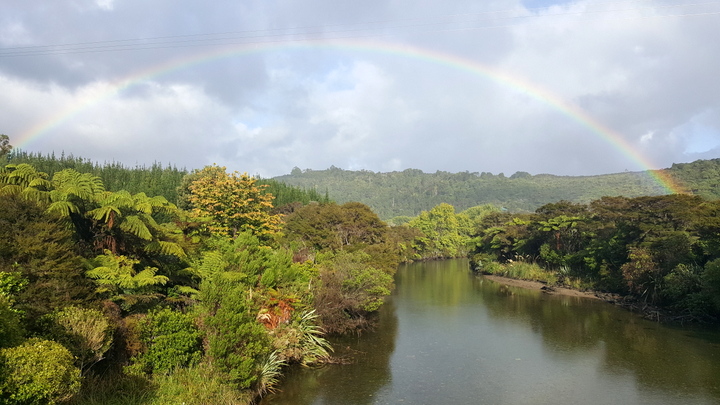
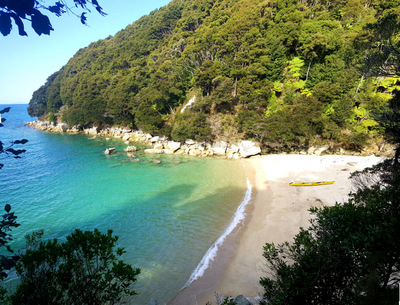 In theory, the Golden Bay enjoys a particularly sunny microclimate compared to the surroundings, but we have to wait several days to find a 3-day window without rain or wind. During those 3 days we will circumnavigate the Abel Tasman National Park by kayak. We leave Tata Beach on a super calm morning. After so many months of cycling and hiking in New Zealand, we have become used to the lushness of forests and giant ferns. However, seeing them from the kayak, right next to the coast or clinging to the edge of the cliffs is a new image that we have not seen until now. During the first day we spot several species of cormorants, including some very curious, with crest and a blue spot between the eyes and the beak. However, the most interesting wildlife are the rays that we find in the shallow waters of the tidal bays. Some span almost one meter and the tail is as long as the body. It's amazing the speed with which they fly away with a couple of wing beats.
In theory, the Golden Bay enjoys a particularly sunny microclimate compared to the surroundings, but we have to wait several days to find a 3-day window without rain or wind. During those 3 days we will circumnavigate the Abel Tasman National Park by kayak. We leave Tata Beach on a super calm morning. After so many months of cycling and hiking in New Zealand, we have become used to the lushness of forests and giant ferns. However, seeing them from the kayak, right next to the coast or clinging to the edge of the cliffs is a new image that we have not seen until now. During the first day we spot several species of cormorants, including some very curious, with crest and a blue spot between the eyes and the beak. However, the most interesting wildlife are the rays that we find in the shallow waters of the tidal bays. Some span almost one meter and the tail is as long as the body. It's amazing the speed with which they fly away with a couple of wing beats.
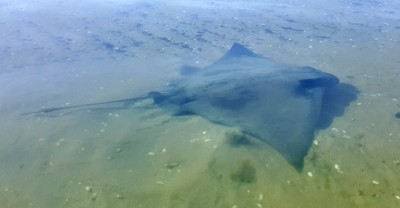 During the second day we see lots of starfish on the rocks, just where the waves come and go. They all look like the same species, but different specimens have different numbers of arms, between 9 and 12. Today we also spot many seals, including a pup. However, cliffs and vegetation are still the biggest attraction for us. Maybe because of having kayaked in the Sea of Cortez, in Baja California. That is an exceptional place to see marine life from a kayak.
During the second day we see lots of starfish on the rocks, just where the waves come and go. They all look like the same species, but different specimens have different numbers of arms, between 9 and 12. Today we also spot many seals, including a pup. However, cliffs and vegetation are still the biggest attraction for us. Maybe because of having kayaked in the Sea of Cortez, in Baja California. That is an exceptional place to see marine life from a kayak.
During these days we have tides of about 3 meters, which greatly influences the navigation. On the one hand, the current due to the tides flow is considerable and has to be taken into account, not only to pass the headlands, but also to avoid paddling against the current more than necessary. On the other, the distance between the campsites and the shore can be hundreds of meters at low tide and the kayak weighs a tone!
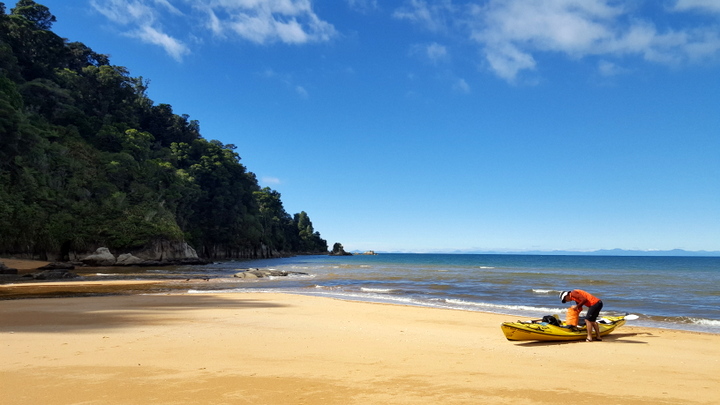
We spend the second night at Mosquito Bay, a bay only accessible by boat and out of reach for the hikers on the Abel Tasman Great Walks. It is a small bay, delimited by two cliffs and with a small rocky island in the middle. We arrive in the afternoon at high tide, so we only have to carry the kayak 10 meters up to get it safely out of the waves. The sun will soon set behind the mountains, so we rush to prepare dinner. Today on the menu we have chicken curry with garlic and onions, a variety of stir-fried vegetables with cardamom, cloves, laurel and a pinch of chili. As a pairing wine, we have a pinot noir from central Otago (NZ). Yummy, uh? Well, let’s describe the dinner with a little more realism so that you get the right impression of the extreme hardness of our trip. We assemble the camping stove with the skillet ready to receive the amorphous food blob that slides down slowly from the Zip-lock bag that contains it. We cooked the chicken and vegetables at the Pohara campground a couple of days ago and we are transporting them in zip-lock bags. The clumps of leek, broccoli, ball pepper and eggplant slither down the oily transparent walls of the bag. Among the vegetables, the chicken cubes rush to leave their suffocation, not knowing that they will end up in a frying pan. Most of the content falls into the pan in a first splotch. Pshhhhhhhhh It is necessary to continuously stir the concoction so that it does not stick and burn, ruining the beautiful aroma that the spices begin to release. Hmmmmmm, here it comes a whiff of cardamom. Next, we have to quickly squeeze the bag to use every single drop of the curry dyed oil.
It is a complicated synchronized movement of rolling the bag from the bottom with gentle pressure with the thumbs to push the juice towards the opening of the bag. With a bit of luck the inner bag has not leaked and the second bag has not been stained. The probability of not getting your fingers dirty during this delicate operation is minimal, but it is not the first time we perform it during this trip. After all, the worst that can happen is that you have to lick your fingers profusely to clean them of curry. While dinner is warming, we open the bottle of wine. It is a screw cap, like all New Zealand wine, so it does not have the charming plop of the cork. It smells good, but when we pour it into our collapsible silicone cups it doesn´t look so good. In any case, it tastes better than water. The sun has already set but it is not cold and we can enjoy dinner watching the calm of the sea in our private cove. The waves create curious patterns. There is a front that comes parallel to the beach. Another advances crossed, as if generated by an independent wind.
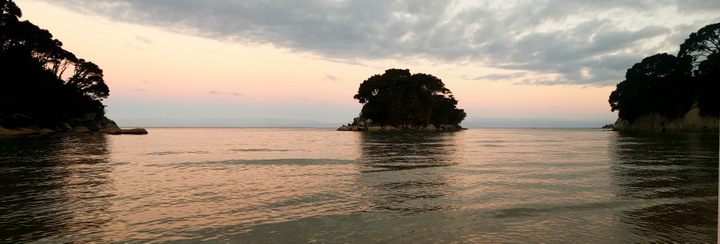
The third day is windy and the sky is gray. We sleep in and the tide is almost at its lowest point when we are ready to paddle. We have to carry the kayak for 150 meters to the shore. Even the island in the middle of the bay is now connected by sand. Once on the water, the coast becomes a little monotonous and it doesn’t surprise us as much as in the previous two days. We arrive at Marahau a little before the high tide, which means being stranded hundreds of meters from the dock. Luckily, one of the tractors that comes to pick up an organized kayak group, loads ours in the trailer and we walk to the dock. The bay looks pretty ugly with that huge expanse of damp sand, with puddles of water and piles of entangled seaweed. In case you have not noticed, we have completed the tour in a double kayak, which in itself, is quite a feat. We have survived the kayak of divorce…
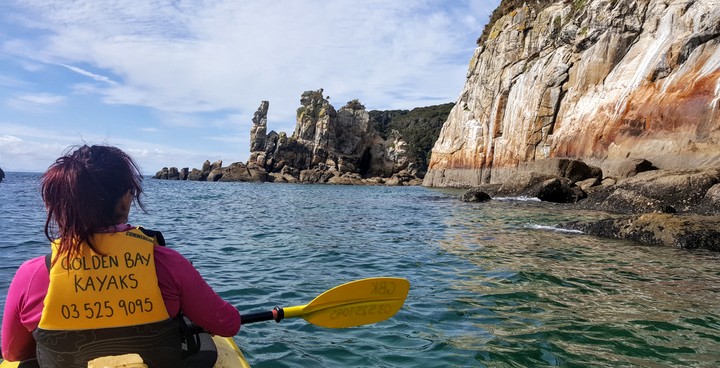
In Marahau our bikes are waiting for us. We repack, change our clothes and ride to Motueka along the coastal road, passing through Kaiteriteri. The short route is worth it. The winding road goes mostly through the forest with sporadic views of the sea. As we approach Motueka, we join the Tasman's Great Taste Trail that runs between fruit orchards, mostly apple and kiwi.
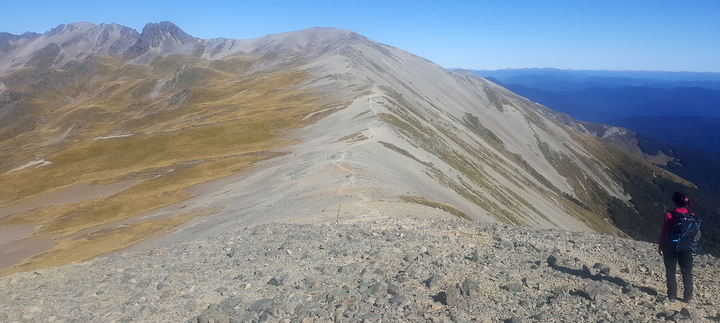
Our next adventure is in the Nelson Lakes National Park, 100 km from Motueka. We bought the ticket back to San Diego for May 14 and we still have too many things to see, so we ride to St. Arnaud, the entrance to the national park, in one day. The elevation profile of the road is hyperbolic, one of those that is scary at first sight, but it ends up being so gently that we can hardly feel the climb. Cèsar's butt can definitely feel the 100 km tough... In this area there are still a lot of fruit trees and orchards. Occasionally, at the entrance of a local road, there is a stand with bags of fruits or vegetables and a box to leave the money. Nobody to attend it. You take the bags you want and leave the money marked on them. This is how the people of New Zealand are. They trust each other! Judit cannot resist the temptation to buy hazelnuts. A bag of one kilo for 5 dollars. As we imagined, the hazelnuts come with their shell. You can visualize the 2001: a space odyssey scene at every stop we make to rest. We sit on the ground and start cracking hazelnuts, with a stone in one hand and another on the ground. In addition, Cèsar looks like a Neanderthal with his beard and Jackson’s five hairstyle. He only needs to brandish a cow's femur when someone approaches. Hazelnuts require too much work to defeat hunger and we tackle a cheese wedge without slicing it. Everything quite primitive. Going to the bathroom in the bush does not help the scene either. We are glad that our parents don’t see us. With all the money they spent on private education!
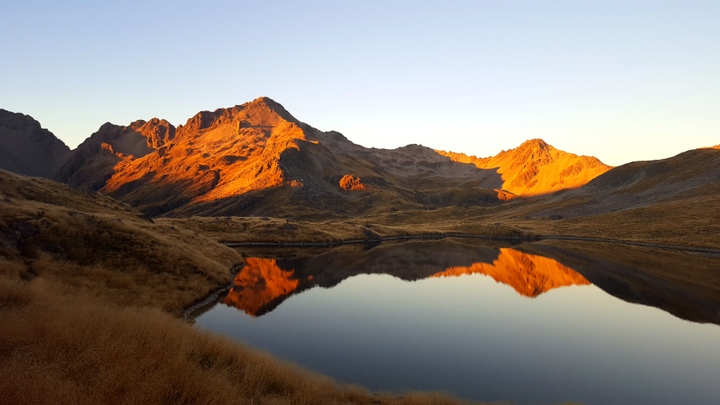
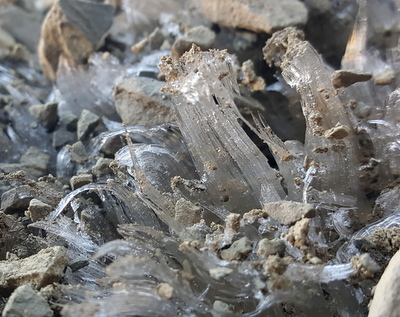 The hike to Angelus Lake is fine but probably we should have spent a few extra days to get into more remote areas. Maybe because the landscape is more familiar to us. The trail goes along a ridge and there are expanse views in all directions. To the right we can see the valley covered mostly by low clouds. To the left, the peaks are chained in mountain ranges. Actually, here is where the Southern Alps begin. The slopes of the mountains are rocky and with little vegetation. A curious plant that grows here is what they call vegetable sheep. It looks like a cushion of small tight clusters. The sunrise at the Angelus hut is gorgeous. The line of sun that comes down the slopes is reflected in the completely still water of the lake. Wonderful! Despite having seen a lot of sunrises, they do not lose their charm. A curiosity that we find hiking back are the ice needles. When the soil is above freezing and the air below freezing, the water in the ground is brought to the surface by capillarity effect and freezes. During the night, small ice columns grow and lift small pebbles and grains of sand up to a height of a few inches.
The hike to Angelus Lake is fine but probably we should have spent a few extra days to get into more remote areas. Maybe because the landscape is more familiar to us. The trail goes along a ridge and there are expanse views in all directions. To the right we can see the valley covered mostly by low clouds. To the left, the peaks are chained in mountain ranges. Actually, here is where the Southern Alps begin. The slopes of the mountains are rocky and with little vegetation. A curious plant that grows here is what they call vegetable sheep. It looks like a cushion of small tight clusters. The sunrise at the Angelus hut is gorgeous. The line of sun that comes down the slopes is reflected in the completely still water of the lake. Wonderful! Despite having seen a lot of sunrises, they do not lose their charm. A curiosity that we find hiking back are the ice needles. When the soil is above freezing and the air below freezing, the water in the ground is brought to the surface by capillarity effect and freezes. During the night, small ice columns grow and lift small pebbles and grains of sand up to a height of a few inches.
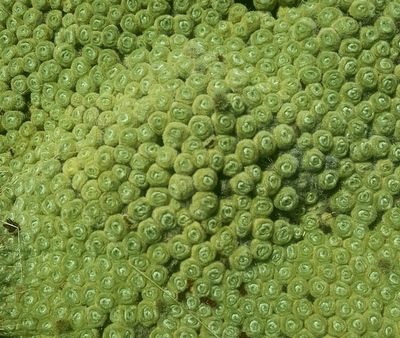 St. Arnaud is another 100 km from Blenheim, the production center for all the wine cellars in the Marlborough region. There lives a Mexican friend that we met in Queenstown a couple of months ago and to who we sent a box with the all the gear we were not going to use in those months. It seems that we are starting to take pleasure in the 3-digit stages and we ride to Blenheim in one day, despite Cèsar´s butt complains… Half of the route goes through vineyards. The terrain is mostly flat but we have to stop to rest our butts and take the opportunity to play primitive by cracking hazelnuts. In Blenheim, our friend invites us to a barbecue at the house of some Chileans friends. The chorizos are so yummy! And the chicken! Well yes, the company is also very pleasant but hunger is a very primitive instinct and takes priority...
St. Arnaud is another 100 km from Blenheim, the production center for all the wine cellars in the Marlborough region. There lives a Mexican friend that we met in Queenstown a couple of months ago and to who we sent a box with the all the gear we were not going to use in those months. It seems that we are starting to take pleasure in the 3-digit stages and we ride to Blenheim in one day, despite Cèsar´s butt complains… Half of the route goes through vineyards. The terrain is mostly flat but we have to stop to rest our butts and take the opportunity to play primitive by cracking hazelnuts. In Blenheim, our friend invites us to a barbecue at the house of some Chileans friends. The chorizos are so yummy! And the chicken! Well yes, the company is also very pleasant but hunger is a very primitive instinct and takes priority...
We say goodbye to the South Island in a short day to Picton, from where we will take the ferry to Wellington, the capital of the country. During almost the entire day a fine but persistent drizzle falls on us. There is no alternative to state highway 1 so the route is quite awful. The constant noise of the vehicles zooming by and the rain make it a dull day. We don´t even stop to crack some hazelnuts! The rain continues throughout the day and all night. The tent continues to leak and we get up with a puddle of water under the panniers. Fortunately, in Blenheim we picked up our new inflatable mattress, so hugging a bratwurst to sleep is past history. However, gear failures continue. The last one is Cèsar’s bike rack. In addition to the aluminum rods being thinned by the constant rubbing of the panniers, one of them has broken. Luckily it is the one that prevents the panniers from getting too close to the wheel and not the ones supporting their weight. Some kludge must be done to endure the remaining 4 weeks, but to laugh at our quick fixes, you will have to wait for the photos on our next story.
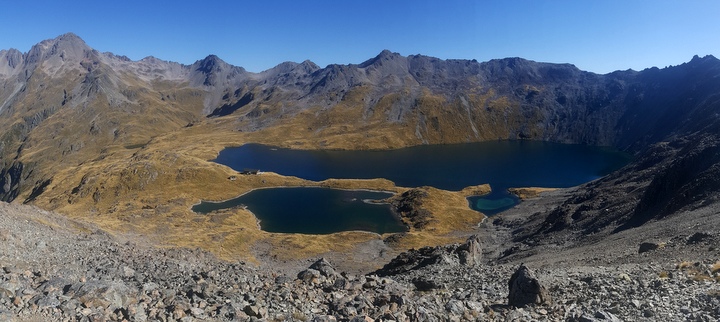
© 2018 Explore Pangea. All Rights Reserved. Website Terms of Use.